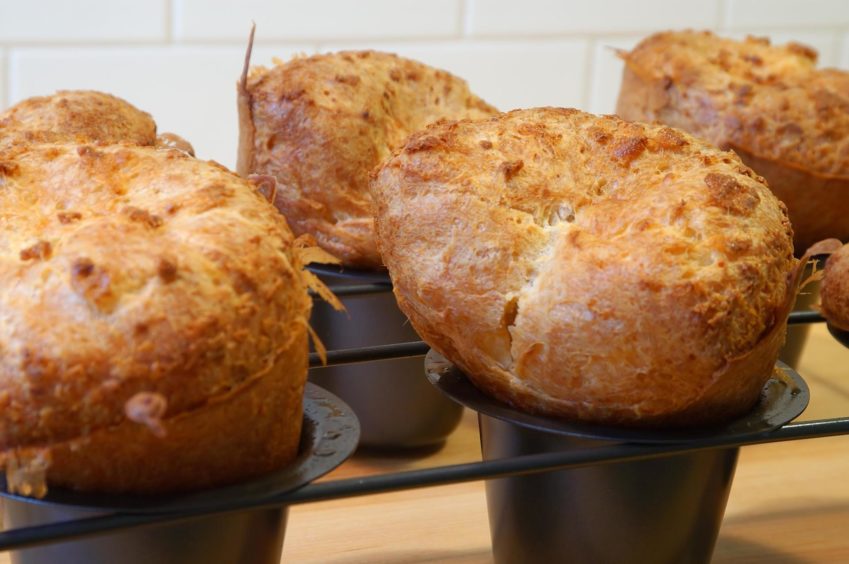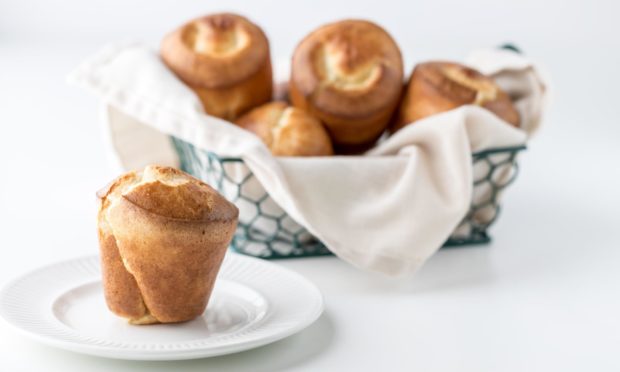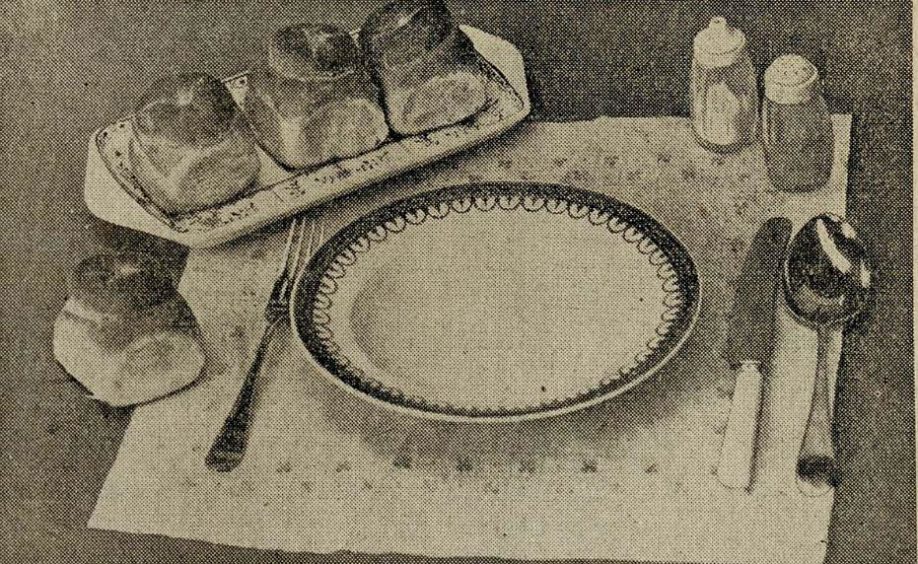If you’ve ever wanted to try making popovers or modern-day mini cottage loaves, why not have a go at these recipes from the 1930s?
When she dedicated an entire page in her 1933 Baking Book to “all kinds of rolls that are right for every occasion”, Aunt Kate wasn’t wrong. Despite the recipes below not being what we would classify as “rolls” in modern times, they certainly are for every occasion.
The recipes below, for popovers and Cornish dinner rolls (what we would today call cottage loaves) are from the early 1930s, so some measurements may be slightly different today than they were back then.
Aunt Kate, the “original domestic goddess” created recipes and wrote household tips for The People’s Friend and the People’s Journal from the 1880s to the early 1960s.
Each week we feature more of her recipes, with previous articles featured here, if you’ve missed any.
Popovers

Ingredients
- 1 egg
- ¼ lb (approx 115g) flour
- ½ pint milk
- Salt
- 1 tsp butter, melted
Method
- Sieve the flour with a good pinch of salt.
- Add the milk and the flour alternately to the beaten egg.
- Add the melted butter and beat until the batter is smooth and full of bubbles.
- Grease half a dozen small cup-shaped moulds, heat them thoroughly and then fill them two-thirds full with the batter.
- Bake in a quick oven (approx 200-210ºC) for 30 minutes, then lower the temperature and continue for 15 minutes.
- Remove the popovers from the tins and serve at once.
Cornish dinner rolls (modern day cottage loaves)
Ingredients
- 1½ lb (approx 680g) flour
- ¾ oz (approx 21g) yeast
- 1 lump sugar
- 2 oz (approx 55g) lard
- 1 tsp salt
- 1 pint milk
Method
- Sieve the flour into a basin and make a well in the centre.
- Melt the lard in a saucepan, add the sugar and milk, and heat them to a lukewarm temperature.
- Cream the yeast with the salt, pour the mixture on to it, and strain into the well in the flour.
- Work the flour gradually into the liquid, and then beat the dough for 25 minutes until it looks light and full of air bubbles.
- Cover the basin and leave the dough to rise in a warm place. When it is well risen, mix in enough flour to prevent it sticking and form into small rolls like cottage loaves.
- Make one large ball of dough, place a smaller one on top and press a floured finger through both.
- Set aside again for a few minutes to rise, then bake in a good oven (approx 200-230ºC) for 25 minutes.
More in this series…

